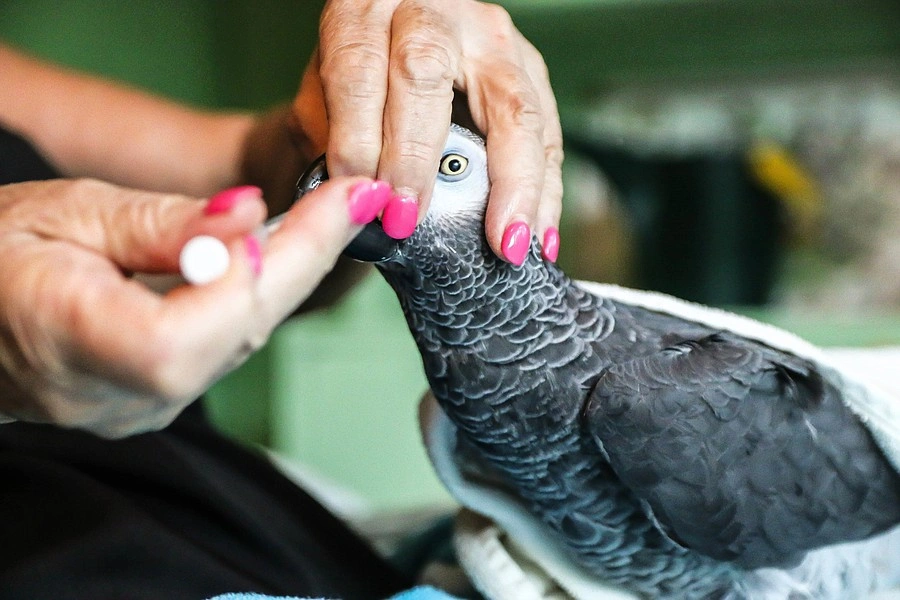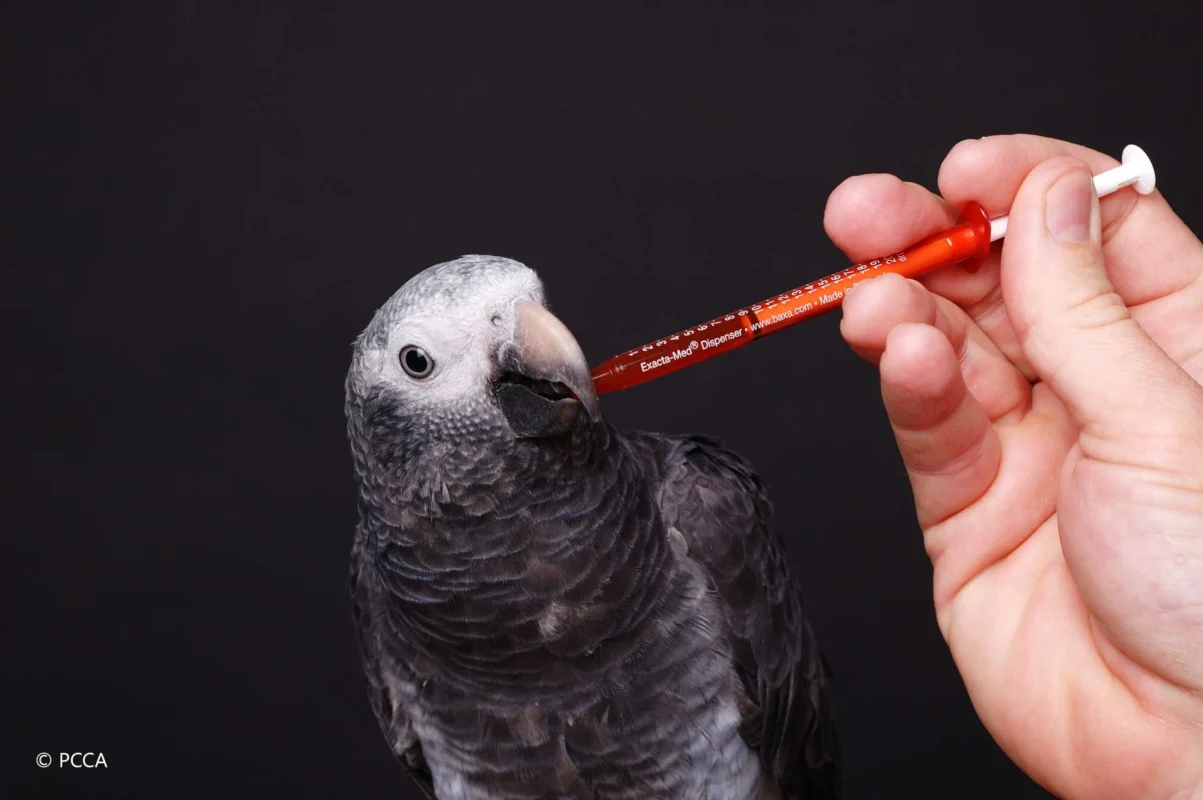Health & Care, Blogs
African Grey Parrot Seizures- Causes and Care
Ever wondered why your African grey parrot might suddenly have a seizure? It’s key for parrot owners to know the causes of these seizures. They can be signs of serious health issues like avian epilepsy or other neurological problems in parrots. African greys often have seizures due to many factors, from primary and secondary health issues to environmental toxins. Knowing how to spot and handle these situations is crucial for your pet’s health.
Key Takeaways
- Seizures in African grey parrots can result from both primary and secondary disorders.
- The ingestion of lead or zinc particles is a common cause of seizures in pet birds.
- The initial phase of a seizure (aura phase) typically lasts between 5 – 20 seconds.
- Immediate veterinary attention is crucial if your bird experiences a seizure.
- Diagnostic tests—including CBC, blood chemistry tests, and imaging—may be necessary to pinpoint the cause.
- Management may involve administering drugs to halt seizure activity based on the test results and diagnosis.
Understanding Seizures in African Grey Parrots
Seizures in African grey parrots are a big worry for bird health. These seizures cause involuntary muscle movements and loss of coordination. It’s important to know what causes these seizures.
African grey health issues often connect to hypocalcemia, a common problem for these birds. Normal calcium levels for these birds are between 8.0-13.0 mg/dl. If these levels drop, seizures are more likely.
Not enough calcium and vitamin shortages can make seizures worse. But, African greys that go outside and get sunlight don’t usually have seizures. Diseases like psittacosis or Newcastle disease can cause serious nerve problems, including shaking and convulsions. Also, toxins from lead or zinc can lead to seizures, making these birds’ health even harder to manage.
Using supplements like DMG (dimethylglycine) in moderation can help prevent seizures in these birds3. So, it’s crucial to watch these birds closely and understand what causes their seizures for the best care.
Common Causes of Seizures in African Grey Parrots
Knowing why African Grey parrots have seizures is key to caring for them well. Many things can cause this issue, from brain disorders to environmental stress. Learning about these can help spot parrot neurological disorders early.
Primary Disorders
Primary issues include serious problems like brain tumors and infections. Trauma and avian epilepsy can also cause seizures. For example, a bad head injury can lead to seizures in African Greys. Heatstroke can also harm the brain, causing seizures.
Secondary Disorders
Secondary issues often stem from metabolic problems, like nutritional deficiencies. African Greys might get seizures from not having enough calcium and vitamin D3. It’s important to watch what your bird eats to prevent seizures. Birds eating too much peanuts and human food can also get seizures.
Toxicity and Environmental Factors
Toxic substances like lead and insecticides can hurt a bird’s brain, causing seizures. Stress from not sleeping well or eating poorly can also make seizures worse. Make sure your bird has a safe, healthy home with good food and less stress.
Identifying Seizures in Your African Grey Parrot
It’s key to spot African grey parrot seizures early for the best outcome. Look for signs like sudden loss of coordination, twitching, or getting lost. A blank stare can also signal a seizure. If you see these signs, jot them down to help your vet figure out what’s wrong. Almost all African greys with seizures have low blood calcium levels. Vitamin lack or stress can also cause seizures.
Credit: PCCA
Watch for any changes in your parrot’s behavior to catch symptoms early. Seizures can be caused by infections, toxins, or unknown reasons2. Check your parrot’s space for stressors that might cause seizures. A balanced diet and a calm home help keep your African grey healthy.
| Behavioral Signs | Description |
|---|---|
| Loss of Coordination | Suddenly losing balance or ability to stand upright. |
| Twitching | Involuntary muscle movements, often noticeable in the face or limbs. |
| Disorientation | A seeming confusion, where the parrot may not respond to stimuli. |
| Vacant Stare | A blank expression, often indicating unresponsiveness during a seizure. |
Spotting these signs early helps your African grey get the right care during a seizure. Seizures over a minute long need quick vet help to prevent overheating and other risks. By staying alert, you can help your bird live a seizure-free life.
Signs and Symptoms of a Seizure Episode
It’s key to know the signs of seizures in your African Grey parrot for good seizure care. These signs can change a lot. Knowing the different seizure phases helps spot specific episodes.
Understanding the Seizure Phases
Seizures go through three main phases: aura, ictus, and post-ictal. In the aura phase, your parrot might act differently, like being quiet or hiding, showing a seizure might be coming. The ictus phase shows the most obvious signs, like paralysis and muscle spasms, lasting 5 to 20 seconds. After, the post-ictal phase, your African Grey might seem tired or confused, lasting several minutes to hours1. Knowing these phases helps in tracking seizure changes and times.
Duration and Behavioral Changes
Seizures in African Grey parrots can last from a few seconds to about two minutes. After a seizure, your parrot might seem tired or lost. Keeping track of when and how often these happen is key for diagnosis and care. If your parrot shows signs of distress or keeps having seizures, getting vet help is a must to tackle the immediate issue and any health problems1.
Seizures can be life-altering for pet birds, so attention to their signs is immensely important.
How to Respond to an African Grey Parrot Seizure
If your African Grey parrot has a seizure, make sure it’s safe first. Act fast and follow the right steps for parrot seizure first aid. Keep your bird calm and safe to prevent harm.
Immediate First Aid Steps
- Gently move any objects or hazards away from your parrot to prevent injury.
- If possible, place the bird in a cage with soft bedding to cushion its fall.
- Ensure the area is quiet and dimly lit, which contributes to creating a safe environment during a seizure.
- After the seizure, offer easy access to food and water, but be cautious not to provide excessive water if your bird appears weak.
Creating a Safe Environment During a Seizure
To make a safe space during a seizure, remove or secure items like toys and perches. This is key as African Grey parrots may have seizures due to poor sleep or too much stimulation7. Knowing what causes seizures helps in making a safe space, especially for health issues like hypocalcemia or toxicity. This way, you can make a safe and comforting place for your parrot during emergencies.
Seizure Management in African Grey Parrots
Managing seizures in your African Grey parrot means focusing on good vet care, tests, and treatments. Start with a consultation with an avian veterinarian who knows about birds. They can check your parrot’s health and find out what might cause seizures.
Consultation with an Avian Veterinarian
The vet will look at your parrot’s diet, health, and any changes in behavior. This helps find out why seizures might be happening. For example, a 13-year-old African Grey had seizures for three months but didn’t have calcium issues after two blood tests. Knowing this helps make a good treatment plan.
Diagnostic Procedures
Tests are key in managing seizures. They might include blood tests to check calcium levels and scans to look for other health problems. A six-year-old African Grey parrot got better with calcium treatments after seizures7. These tests help understand your parrot’s health and make sure the diagnosis is right.
Medical Treatments and Ongoing Care
Doctors might prescribe avian anti-seizure medicine like Epiphen Solution, given at 0.05ml twice a day. This could make your parrot sleepy, showing how the medicine affects them. Some parrots need changes in their diet and vitamins for things like low calcium, seen in many cases. Keeping an eye on how your parrot reacts to treatment, tracking seizures, and adjusting the plan as needed is important.
Conclusion
Understanding african grey parrot seizures is key to caring for your bird. Knowing the causes, signs, and how to manage them can greatly help your parrot’s health. Watch for any signs and know when to get vet help to tackle this issue well.
Preventing seizures in your African Grey can start with proper calcium levels. For birds, normal calcium levels are between 8.0-13.0 mg/dl. Regular health checks are crucial to keep these levels right. Also, birds that live outside and get sunlight are less likely to have seizures.
Early spotting and quick action are vital in handling african grey parrot seizures. Being well-informed and ready can make a big difference in your parrot’s life. It helps in supporting them through their health journey9.


